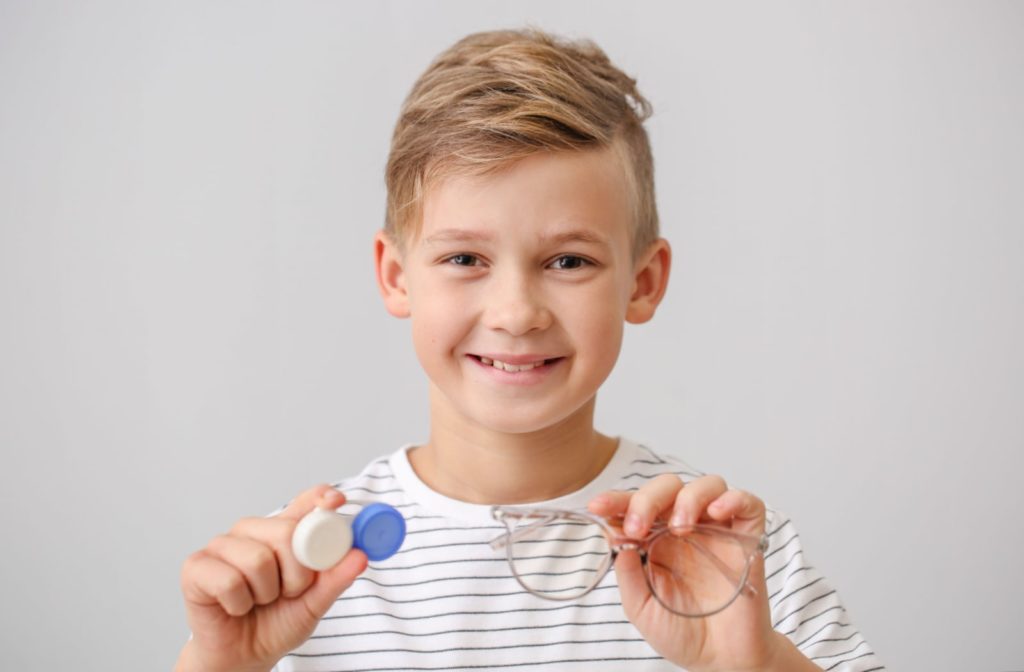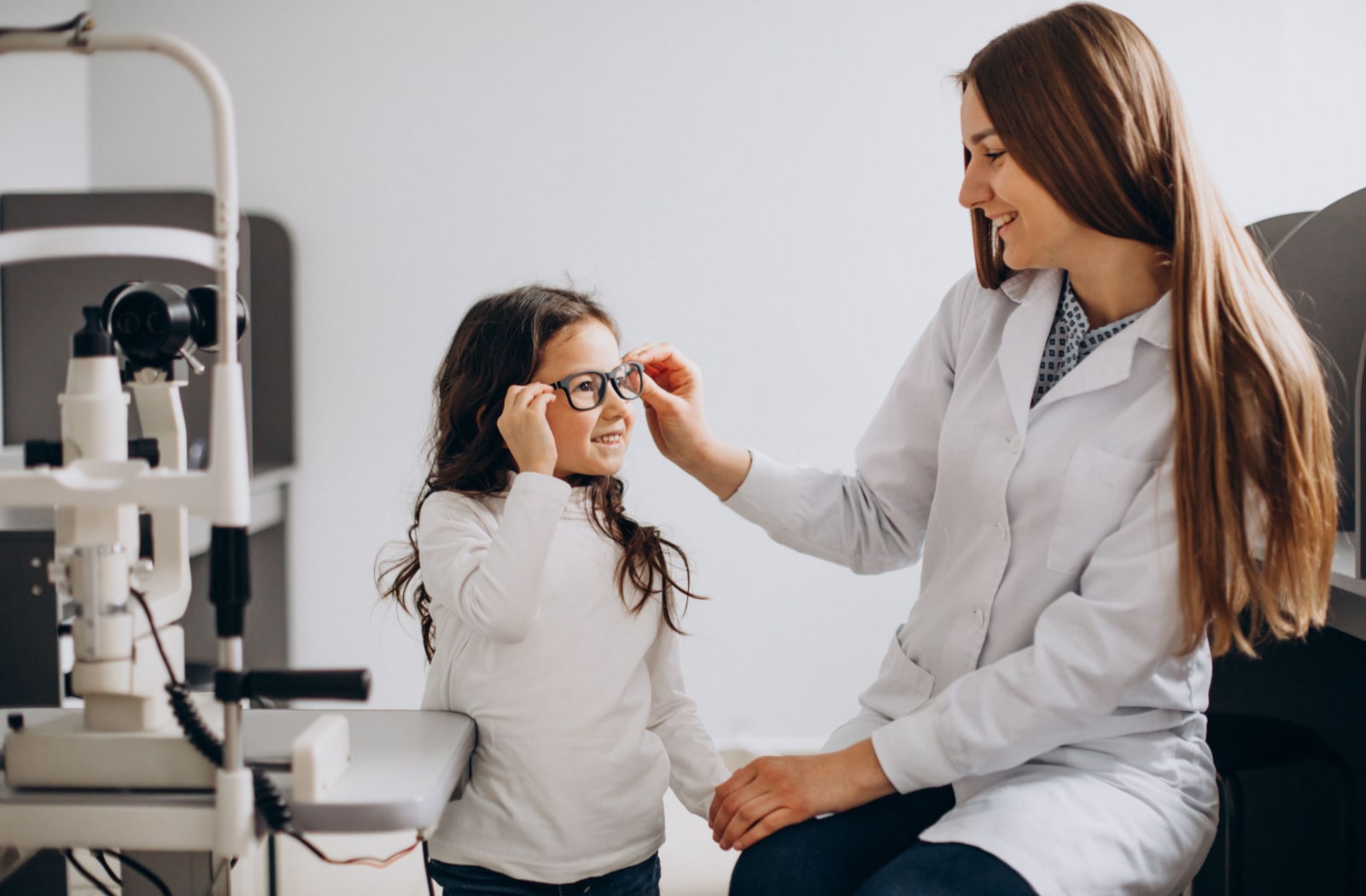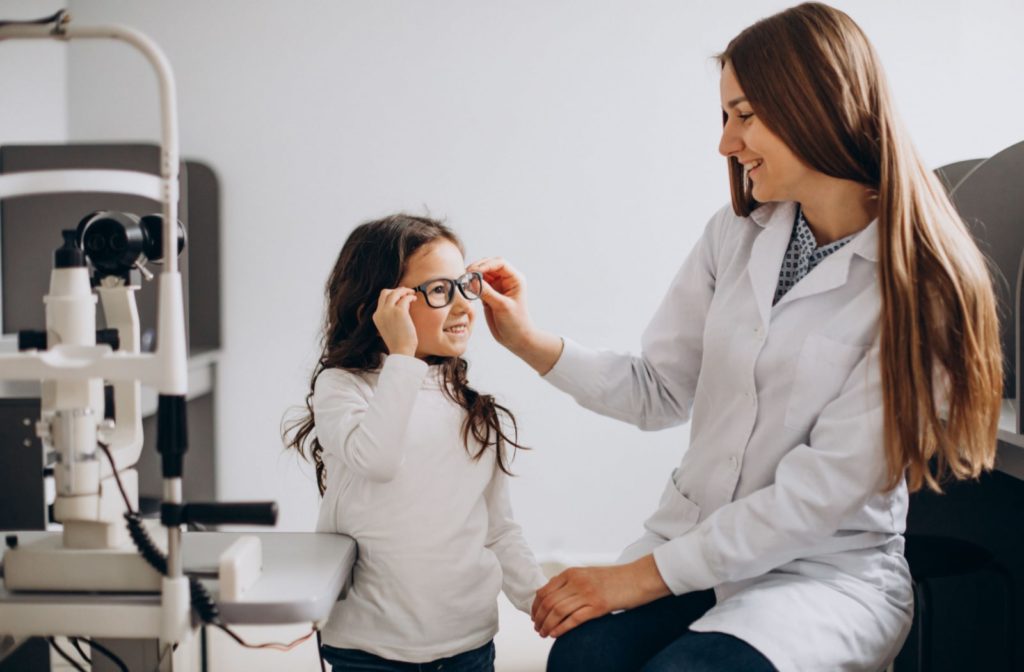Myopia or nearsightedness is when you can see close-up objects clearly but have blurry distance vision. It’s a common condition affecting 30% of Canadians and can be diagnosed with an eye exam.
While anyone can become myopic, myopia usually develops in childhood. Myopia control refers to methods used to slow the progression of myopia in children and adolescents. It may involve a combination of techniques, such as eyeglasses or contact lenses, as well as pharmaceutical or behavioural interventions.
The goal of myopia control aims to reduce the risk of sight-threatening complications associated with high myopia, such as retinal detachment, glaucoma, and cataracts.
What Causes Myopia?
Myopia occurs when light focuses incorrectly, causing distant objects to appear blurry. Light focuses in front of the retina (the light-sensitive tissue in the eye) rather than directly on it. This refractive error results from an eyeball that’s too long.
Symptoms of myopia can include:
- Blurry distance vision
- Partially closing the eyelids to see clearly (squinting)
- Headaches
- Eyestrain
- Excessive blinking
- Frequent eye rubbing
- Sitting close to the television
Your risk of developing myopia increases with the following:
- One or both parents being nearsighted.
- Prolonged reading or doing close-up activities.
- Long periods in front of screens.
- Less time spent outdoors.
Treatment for Myopia
Myopia isn’t reversible. However, you can decrease the risk of becoming highly myopic by spending more time outdoors. Myopia treatment usually involves correction to improve vision, such as prescription eyeglasses and contact lenses.
Because myopia starts in early childhood, between ages 6 and 14, and worsens until the early 20s, correction with basic glasses and contacts doesn’t address myopia progression.
It’s vital to slow myopia progression during childhood and adolescence as the eyes rapidly grow to prevent frequent changes in prescription and reduce the risk of vision problems later in life.

Myopia Control & Management
Correcting myopia and managing myopia are two different things. Myopia control and management strategies can include several methods, such as glasses or contact lenses with specific prescriptions, pharmaceuticals, and behavioural interventions.
Atropine Eye Drops
Low-dose Atropine eye drops for children between 5 and 18 can slow myopia progression. It works to dilate the pupils and temporarily freeze the focusing muscles of the eye.
Drops are used at bedtime and placed in each eye. Side effects can include itchiness and redness around the eye as well as light sensitivity.
MiSight Contact Lenses by Coopervision
MiSight contact lenses are special daily contact lenses for children 6 to 12 years. The contact lens helps in myopia control by slowing elongation of the eye.
Orthokeratology
Orthokeratology or Ortho-K are specially designed contact lenses to slow myopia progression by flattening the centre of the cornea, changing the way that light bends when it enters the eye. Children wear these contacts overnight to correct blurry vision during the day.
Ortho-K lenses temporarily reshape the cornea while you sleep. If you stop wearing them, the cornea reverts to its original shape. However, it may provide some permanent reduction in myopia progression.
MiYoSmart Lenses by Hoya
Available in Canada since 2020, MiYoSmart lenses can provide clear vision and effectively manage myopia progression without any adverse side effects. They are a non-invasive, easy, and safe way to slow myopia progression in children. Results from a 2-year trial showed that myopia progression slowed by 60% with daily use of MiYoSmart spectacle lenses.
Behavioural Interventions
Additional steps to slow myopia progression in children include:
- More time with outdoor activities
- Take breaks during near work
- Limit screen time on computers and other digital devices
It’s important to note that myopia control methods can have different levels of effectiveness; what works best for one child may not work well for another. You can consult your eye doctor to determine the best treatment plan for an individual’s needs.
Protect Your Child’s Vision
Myopia control methods can be effective in slowing the progression of myopia. However, they aren’t a cure for myopia. Regular eye exams, especially for children and adolescents, are necessary to detect early signs of myopia and to track and manage myopia control methods.
Younger children aren’t always aware they have eye problems. So, if your child shows signs of myopia or has trouble seeing, book an appointment with View Pointe Vision + Style in Winnipeg.


